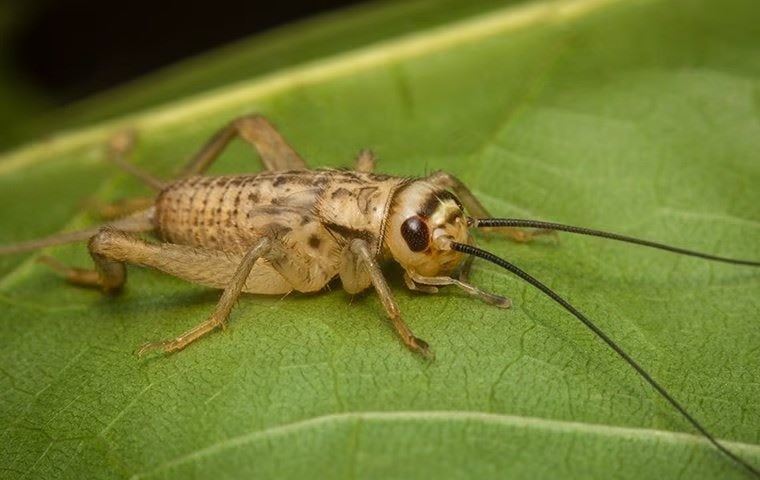
What Every Louisville Property Owner Ought To Know About Ground Crickets

Are you having trouble with ground crickets? These are tiny insects that are between 3/8 and 1/2 an inch in length. They're not much to look at by themselves, but when you have several of them getting into your Louisville home, they can create a big problem. Let's take a look at a few important things you should know about ground crickets.
Why Ground Crickets Are Getting Inside
Your home does not have an environment that is suitable for ground crickets. They get in by accident. It is important to understand the conditions that lead to an infestation and correct these issues.
Organic Harborage
A home with ground crickets inside is likely to have lots of organic debris around it. This might be leaf litter, sticks, grass clipping, mulch, woodpiles, or some other debris near the home. Ground crickets find harborage under this layer of debris.
- Rake leaves, pine straw, and other material away from your foundation wall.
- Move woodpiles to at least twenty feet from your foundation.
- Try to establish a dry patch of around 18 inches between your foundation wall and your landscaping.
- Remove unnecessary vegetation from your landscaping.
- Remove rock piles that are near your foundation walls.

What's the Action Advantage?
Find Out What Makes Us Different!
-
Environmentally-Friendly Products Available
-
After-Hours Answering Service Available
-
70+ Certified Pest Management Professionals
-
Trusted by the Community Since 1946
Address Moisture
If you have a damp perimeter, you could invite ground crickets. These insects will feed on insects in your landscaping. Moist vegetation attracts these insects. Try to promote a dry environment around your home.
- Make sure your gutters are doing their job.
- Water your plants in the early morning so that all that moisture will dry up long before nightfall.
- Keep everything trimmed and plucked. This lets the air flow through your landscape and dries the topsoil.
- Cut branches from trees that block the sun and create areas that are densely shaded.
-
“I have been using Action Pest Control for 3 years. They are professional, quick and always do a great job getting rid of those pesky ants. Rusty is very professional and goes above and beyond for the customer.”- Megan C.
-
“Action Pest Control has serviced our home in a variety of ways for nearly 14 years. We have been very satisfied with them and contracted for additional services from them because we trust them!”- Joseph E.
-
“I have used Action Pest Control for almost a year now. They have always performed the services when they were supposed to and it has always been affordable. Technicians are also friendly!”- Jarred M.
-
“Everyone I spoke with was so nice and very knowledgeable. I will never stop using them!”- Thomas I.
-
“Very professional and knowledgeable. Have never had problems since they have been coming!”- Donna H.
-
“James was very professional and understanding. Answered all questions, and walked us through what was going to happen with our choice of treatment, I highly recommend getting the warranty!”- Keri W.
-
“The quality of pest control is excellent; personable employees with excellent customer service; reasonably priced. Much better product and service than the big, well-known pest control businesses. Thank you!”- Sandra R.
-
“I have used Action Pest Control for many years now. They are always very professional and easy to work with. Travis was very friendly and helpful during his visit.”- Cassie O.
Reduce Light
Ground crickets are attracted to light. If you have lots of exterior lighting, you could be luring these insects to your home at night.
- Keep lights off at night whenever possible. The obvious exception is in locations where it is a security concern to have the lights off.
- Consider replacing white lights with yellow lights. Yellow light is more resistant to insects.
- Keep shades and curtains closed at night to keep the light inside your home.
Seal Your Exterior
The biggest reason ground crickets get into your home is that they can. While reducing cricket activity is important, it will do nothing if you provide entry points for crickets to get inside. Do a detailed inspection of your exterior and seal any holes, gaps, or cracks you find. Some common trouble spots are:
- Gaps in the weatherstripping around exterior doors
- Missing or damaged door sweeps
- Gaps around the outside of door or window frames
- Holes created by wood-damaging pests in door or window frames
- Damaged screens on doors or windows
- Openings around window framing
- Damaged window or door panes
- Cracks in foundation walls
- Chipped mortar
- Unprotected weep holes
- Holes in sole plates (also called sill plates)
- Gaps around wire conduit PVC or pipes

